
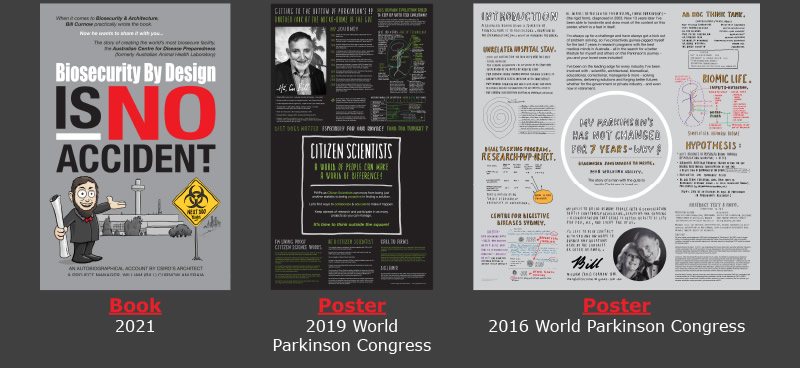


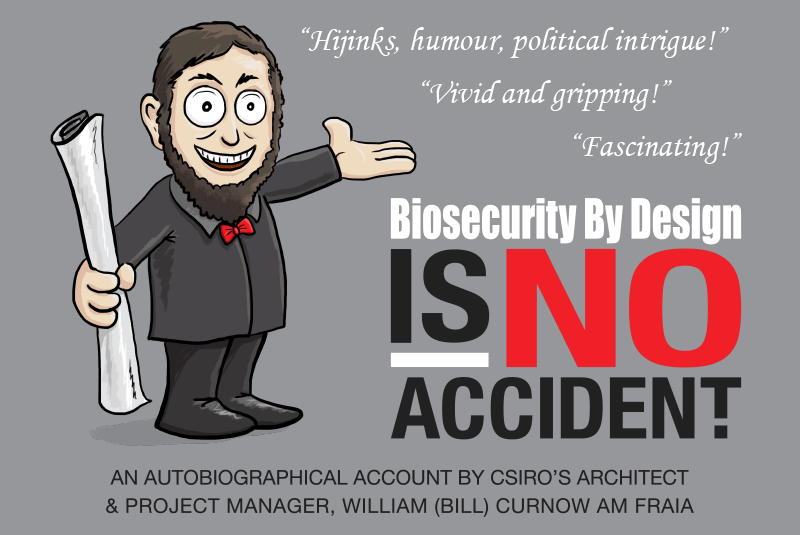 |

|

"The story of how the Australian Centre for Disease
Preparedness (formerly AAHL) came to be could not be a more timely
reminder of how important projects get done.
CSIRO
Architect William (Bill) Curnow gives us a mesmerizing,
behind-the-scenes glimpse into the role serendipity,
dogged commitment, and deeply creative juices stirring
in a pot of committee-driven stew played in bringing to
life a groundbreaking, precedent-setting design for
biological containment centres...and through it all is
the ever-irrepressible spirit and keen intellect of Bill
Curnow, a man not only known for never taking "No" for
an answer, but who rarely even acknowledged the
naysayers as he smiled, maneuvered, and cajoled his way
to the "Yes" answer he knew was right.
I first met Bill Curnow when we were both involved in
the design of another type of containment infrastructure
- prisons. I was immediately struck by his energy, his
intellect, his perseverance, his sense of humour, and
most importantly, by what I later came to understand was
his kindly patience that allowed the rest of us to catch
up with his insights and solutions. Bill is that rare
individual who selflessly seems to make every enterprise
he's involved in better than it would have been without
his participation.
For anyone interested in learning how great projects get
done, I urge them to read this book - it is a primer on
how to successfully navigate one's way through
roadblocks, lesser ideas, and committee governance,
while staying true to one's vision and sense of what
needs to get done.
The only thing Bill Curnow could never contain is his
boundless curiosity and enthusiasm, and for that I, and
the world, are forever grateful.
A great read!"
Wayne Calabrese, Calabrese Consulting, Florida, USA
 |
 |
|
|
|

|

"I began reading Biosecurity By Design Is No
Accident in the rest periods between working on my
own book, and found the rest periods expanding. My late
night reading also ran later. I genuinely found it a
fascinating story and appreciated it being extended
beyond the completion of the building."
Robin Kleinschmidt OAM
 |
 |
|
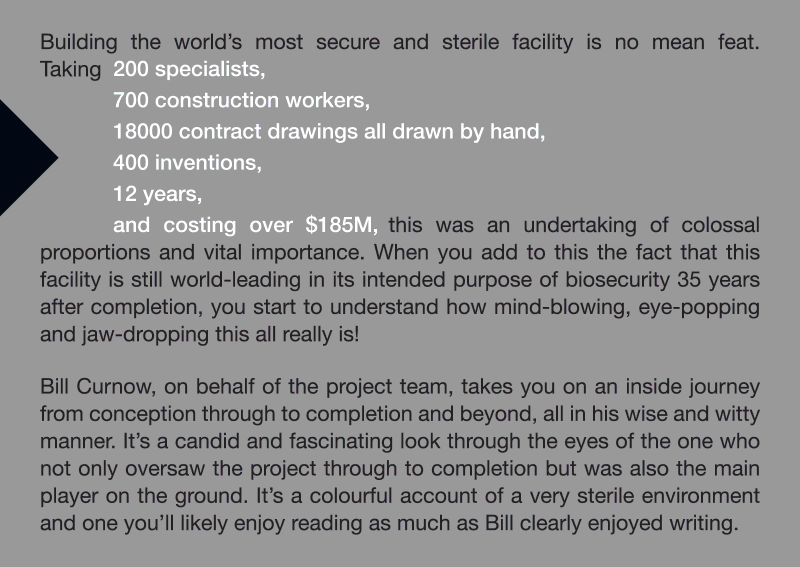 |

|

"Like Australia’s most famous building, the AAHL was
a landmark achievement for its architects, engineers and
scientists and a significant investment for government.
While not as visually arresting as the Sydney Opera
House—indeed, its ability to evade attention is one of
its key achievements—it is technically far more complex.
To replace it today would cost between one and two
billion dollars.
It’s a story that encompasses moments of political
intrigue, hijinks and humour, as well as long hours of
tedious documentation and fact-checking. He recalls a
construction office unlike that of today: when all-male
crews smoked on site and in offices, unions were
powerful, and work safety something of an after-thought.
Some lessons have been learned, but there is much still
to learn from the construction of the AAHL. Curnow’s
detailed records and memory of the building’s
realization make that possible.
Bill Curnow, was subsequently engaged as an independent
expert by the United Nations on biocontainment
infrastructure in India, and by the agricultural
departments of Canada and France, and was listed on the
Register of Technical Experts of the Commonwealth of
Nations - a role no other Australian architect has
achieved in any other building type."
Professor Sandra Kaji-O’Grady - Head of the Faculty
of Architecture, University of Queensland, Australia
 |
 |
|
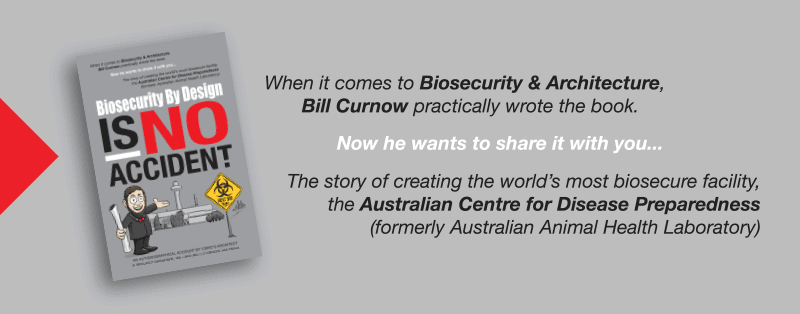 |

|

"Bill Curnow has written a vivid and gripping account
of the development of Australia’s, and arguably the
world’s, most secure biosecurity laboratory and the
vital role he played in its establishment.
A fascinating and illuminating part of the story
concerns his exposure of ‘behind the scenes’
machinations by government and individuals to further
their own interests, and the role government changes and
instability lead to frustrating delays. He describes how
successive governments failed to provide the funding
necessary for the laboratory to reach its full
potential. Throughout the book are also neat thumbnail
sketches of some of his colleagues and their antics."
Max Kanowski, retired, Reader in Classics, University
of Queensland and Freda Kanowski, retired, Thatcher
Librarian, University of Queensland
 |
 |

|

AAHL/ACDP is the story of some 200 architects, engineers
and scientists, some 700 construction workers together
with administrative and management personnel, brought
together and managed to create AAHL/ACDP. There were no
regulations for guidance, no blueprints to follow, so we
researched, prototyped and modelled our way to the top,
on the hop so to speak.
When completed in 1985 AAHL took its place in world
rankings alongside CERN - for those looking for
fundamental particles and the infinitely small; and
alongside Hubble Telescope - for those looking for the
infinitely faint, large and distant. AAHL was there for
those looking for the infinitely variable and elusive
microorganisms. These included prions, fungi, bacteria
and viruses - the live/non-live entities that together
and individually cause animal diseases. Any one of them
is capable of bringing Australia to its knees through
loss of export markets or through ill health of its
citizens.
In recent times AAHL/ACDP has paid for itself many times
over through its ability to deal with microorganisms
unimagined at the time in its journey from a truckload
of documents known as the PET Report to become the most
incredible asset Australia and the world has in the war
against SARS, Hendra virus, Avian influenza, and most
recently COVID-19.
This is not so much a ‘handbook’ on how to build a BSL-4
laboratory but is a document that recalls some of the
politics surrounding the AAHL project and some of the
charismatic personalities encountered along the way.
Despite several name changes, the vision has not been
lost. NLAD to NAHL to ANAHL to AAHL to ACDP and beyond
to the STARS!
William (Bill) Curnow, Author of Biosecurity By
Design Is No Accident
 |
 |

|

"In the true sense of the word Bill Curnow was a
pioneer. The boy from the bush developed from first
principles world class designs and standard that to this
day remains the blueprint for containment labs.
AAHL is just one example whereby Bill’s intellect, his
inquisitiveness and abstract “can do” attitude to this
day continues to transgress across many industries.
He is the ultimate quiet achiever, delivering effective
outcomes in a world full of white noise and bravado. I
remain humbled and privileged to have known and worked
with such a true gentleman and scholar."
Jamie Flood - General Manager, Defence Business
Development, Downer Group, Melbourne, Australia
 |
 |

|

"Biosecurity By Design Is No Accident is far
more than a personal history of the design and
construction in the 1970s and 1980s of the Australian
Animal Health Laboratory in Geelong, although it
accomplishes that function in a comprehensive and
interesting fashion. It also reflects on the
intersection of engineering and architecture, on
effective management styles, on the significance of
keeping in balance the demands of the big picture and
the most minute detail, on the importance of teamwork,
on the impact of political decisions on such projects.
It also awakens a new respect for the power of lateral
thinking, which is clearly one of the author’s great
strengths. The book is a lesson in the outcomes of
relentless insistence on the highest standards in every
aspect of an enterprise.
Bill’s role of manager of this vast project allows him a
perspective available to no one else. He is generous to
his colleagues, modest but realistic about his own
contribution. He allows the results to speak for
themselves. He is proud but regretful to find that the
standards achieved by him and his colleagues almost
forty years ago have not yet been surpassed.
Although the book traces a project completed many years
ago, it does not finish there. There are reflections on
world developments in biosecurity and proposals for the
future. The writer accepts and embraces the need for
constant re-evaluation and improvement even when world
standards have been set, and his active mind still
grapples with those issues. High quality biosecurity has
rarely been more relevant than in the time of a global
pandemic caused by an escaped virus.
Behind and within this interesting read are the constant
presence and personality of Bill Curnow. In a
characteristically idiosyncratic fashion, he gives us a
partial picture of the man behind the manager / husband
/ father / colleague who appreciates those who
have made the journey with him.
Sadly, this is a book which is unlikely to reach the
wide readership it deserves. It is interesting and
accessible to the least technically literate reader, and
would satisfy those looking for technical detail.
In all, an admirable achievement."
Robin Kleinschmidt OAM

"Bill Curnow is a veritable chunk of coal that became
a diamond in the realm of innovative thought and world’s
best application. His legacy, like the ACDP, will be of
profound national and international importance, yet
deliberately low-key."
Jill Lange-Mohr OAM
 |
 |
|
|
| |
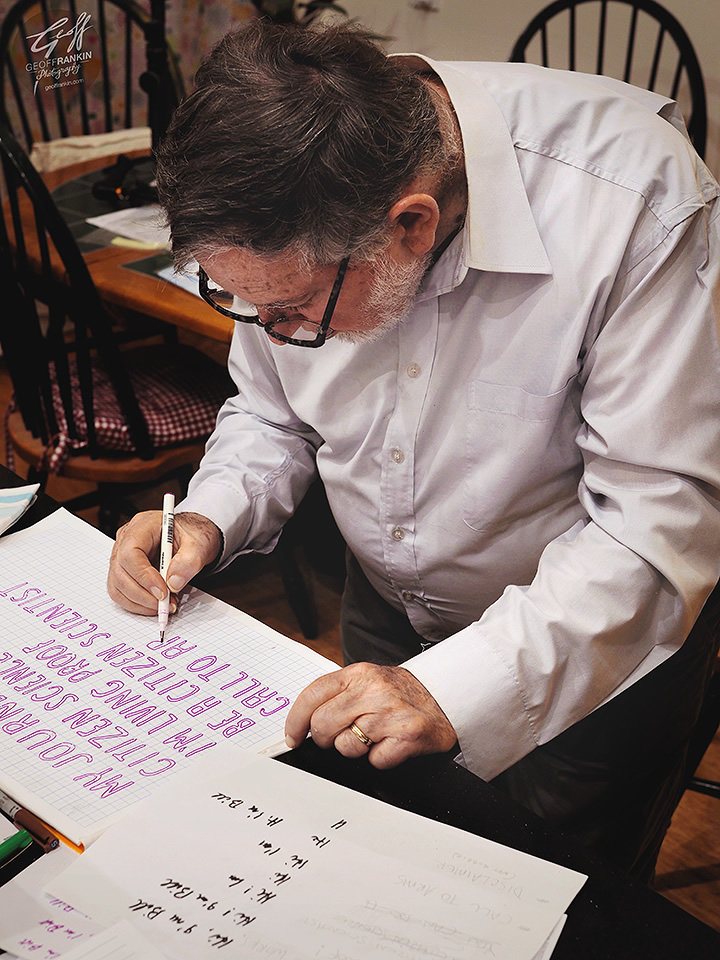
A photo of me hand-drawing the 2019 poster headings, May 2019. Geoff then
digitized them for the poster & website.

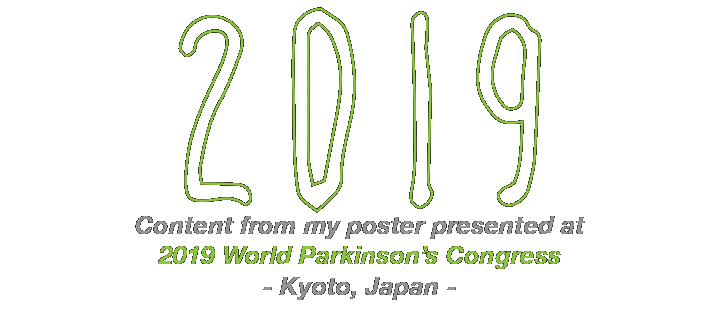

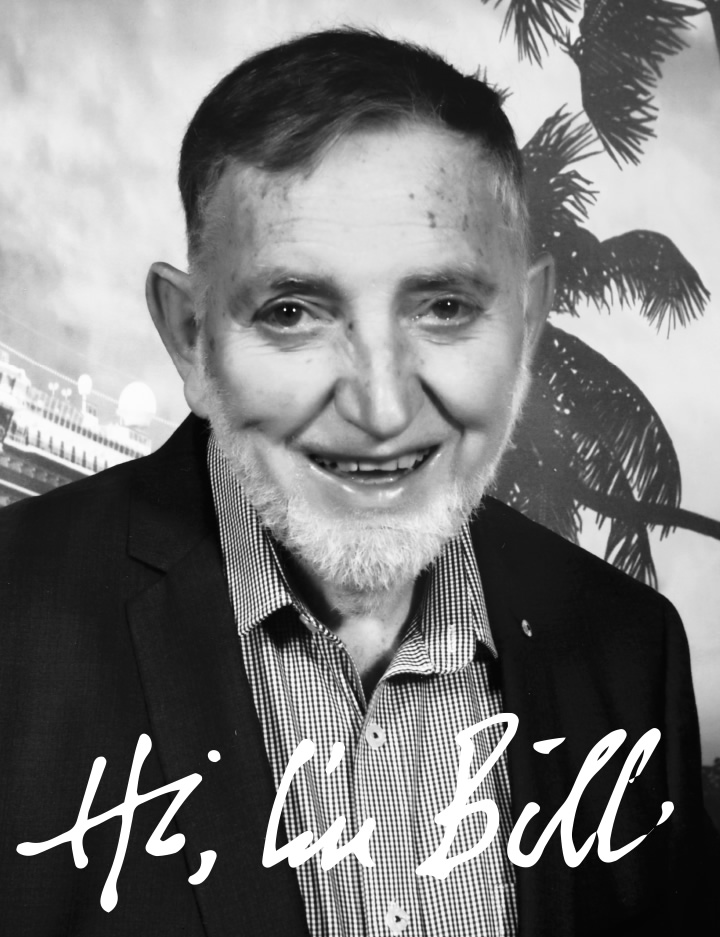
> William (Bill) Curnow AM FRAIA, Australian Architect & Professor, now
retired
> 80 year old still on a mission to change the world - avid
Citizen
Scientist
> In 2003 diagnosed with PD (rigid form) - unable to write, poor walking
ability
> 16 years later I’m still walking, talking, writing & driving - I’ve even
handwritten & hand-drawn the content (headings, notes, diagrams etc)
on this website
> Better now than prior to life-changing antibiotics in 2011
> Attended WPC in Glasgow 2010, Portland 2016 & Kyoto 2019
> I’d love to be in contact with you and am happy to answer any questions
-
margbillcurnow@yahoo.com.au


2003 / Unable to write, poor walking
ability. Diagnosed with PD (rigid form).
2003 / My journey as a Citizen
Scientist with regards to PD began. I actively sought out research
programs to participate in.
2010 / At WPC Glasgow 2010 there was
no mention of potential link between gut bacteria and PD, considered to
be purely a brain disfunction.
2011 / I completely lost my PD
symptoms for at least 2 weeks after a heavy course of antibiotics
including Flagyl infusion. Medical Researchers skeptical even though
they filmed me doing practical tests I could not do prior.
2012 / Established ad-hoc PD
research group with some of the best medical minds in Australia. I’ve
always been proactive.
2016 / Presented my findings in a
poster at WPC Portland 2016 - the only poster that mentioned the gut.
There were only 2 papers relating to the gut - both Hot Topic subjects.
2017 / No longer taking antibiotics
due to Peripheral Neuropathy. Constipation returned & PD got worse.
2017 / Fecal Microbiota Transplant.
No noticeable improvement.
2018 / PD symptoms reduced following
antibiotic treatment for pneumonia & impacted bowel. Only lasted a
fortnight.
2019 / Dr Jim Aylward suggests
Golden Kiwi Fruit as a way of modifying the gut. It reduced
constipation. Microba tested gut bacteria before and after diet change.
Results show significant improvement in bacteria diversity - shown on
the graph below.

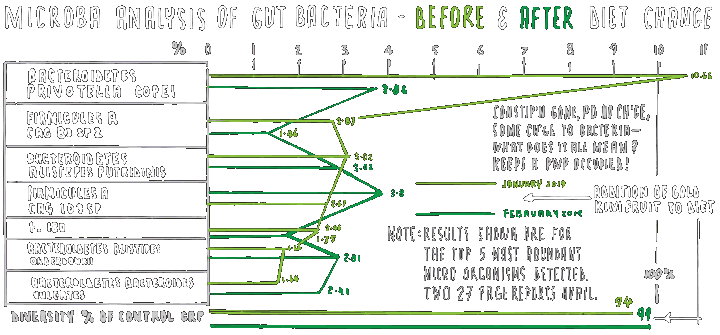


The modern human is subject to infinitely more
challenges to the autoimmune system than 100 years ago. Therefore we
need to tackle PD in a collaborative method, drawing on the expertise of
many professions, not forgetting the people with PD themselves as they
have the greatest motivation of all.
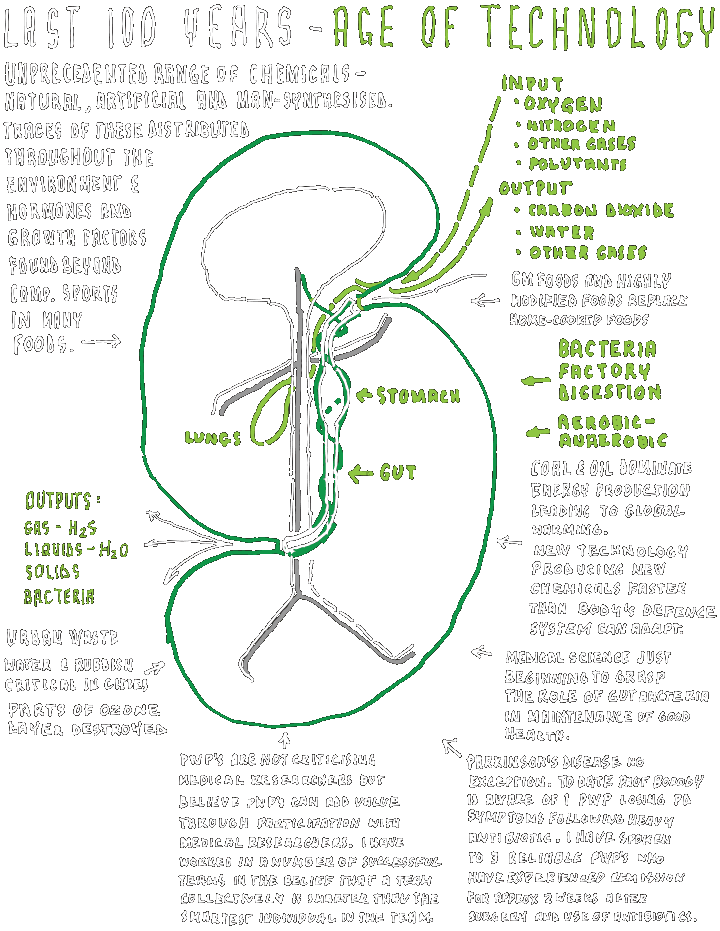


In 2016 ad-hoc team of Curnow (PWP), Borody, Aylward, Silburn, Codd
et-al reported research suggesting linkage between gut biome and PD.
Group focus is now on impact of various foods on gut biome and
attempting to find linkages between food, biome, health.
Group knows of 4 reliable PWPs whose PD responded
positively to antibiotic treatment.
We now need to identify the bacteria that was disabled by the
antibiotics, and find ways to do so without the use of antibiotics.



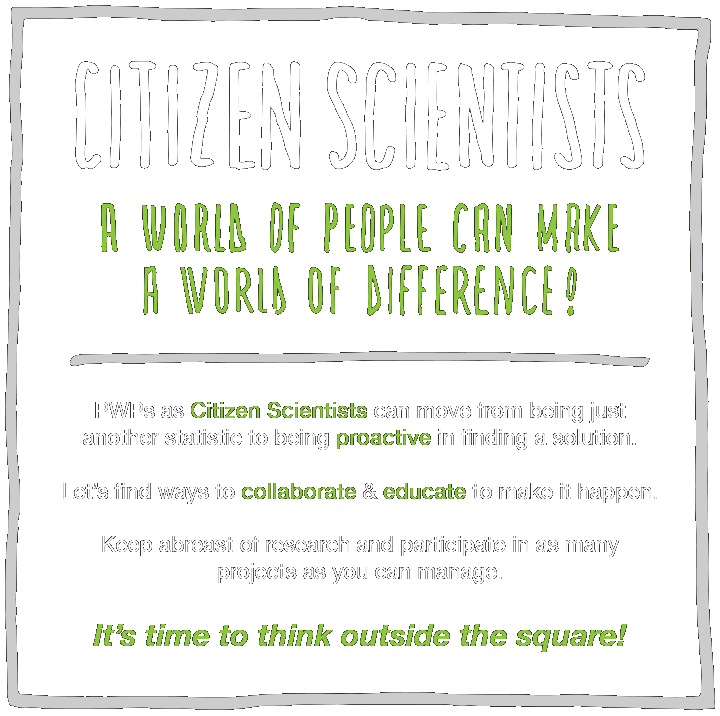


It is 16 years since I was diagnosed with Parkinson's Disease and
many areas of my life are much improved over what they were when first
diagnosed in 2003.
I realised that most of the research was about treating symptoms and did
not attempt to identify the root cause. Unless you understand the true
nature of PD you can’t hope to cure it or prevent it from happening in
the first place.
So I sought to participate in research projects and latterly in projects
of my own making. Although I can’t claim to have cured myself,
I have
benefited from my research, extending my capacity for life far beyond
that which one might reasonably expect.
The process has lead me to use the term Citizen Science, and perhaps my
successes will generate interest in the wider PD community to join in
the process. Will you become a Citizen Scientist too?
Although this may be interpreted by some as the placebo effect, one
can’t argue with the results. I’m living proof.


The medical research profession has been grappling with PD for 200 years
without serious break-through.
People with the greatest motivation to make that break-through are PWPs,
their carers, family & friends.
All are capable of being Citizen Scientists.
Access to information and other PWPs is readily available thanks to the
internet - websites, email and social media.
Groups can access likeminded people and participate in amateur but
legitimate research.
The process of Citizen Science greatly multiplies the chances of finding
break-throughs by intention or serendipity. The more pairs of sharp eyes
observing and scanning the information the higher the likelihood of
finding the elusive clue to cracking the secrets of PD.
As the amount of different chemicals continue to multiply exponentially
the number of possible interactions between the human, his/her biome and
the environment are seemingly endless. We need as many Citizen
Scientists on the task as possible.


We need to think outside the square in our
approach. We need people capable of putting multidisciplinary teams
together to look at complex problems.
Australian General Sir John Monash took the three disparate arms of the
British Empire’s defence force and by integration caught the enemy by
surprise, turning the tide of WW1. We need a John Monash - that
might be you - to lead people with PD, their carers and medical
researchers to work collaboratively so that we can turn the tide on PD.


The information contained on this website is the personal experiences of
Bill Curnow, who has acted in partnership with his medical specialists.
We advise everyone to consult with their medical specialists before,
during and after any unilateral action.
 |
|
| |
|

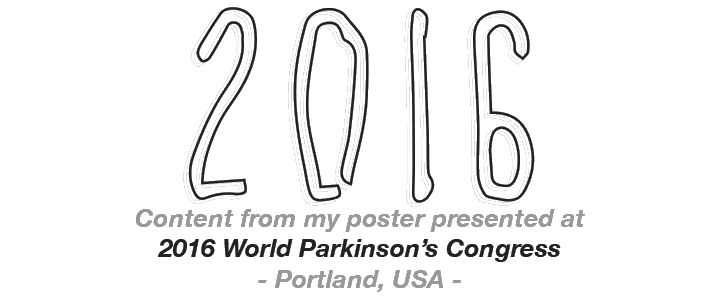

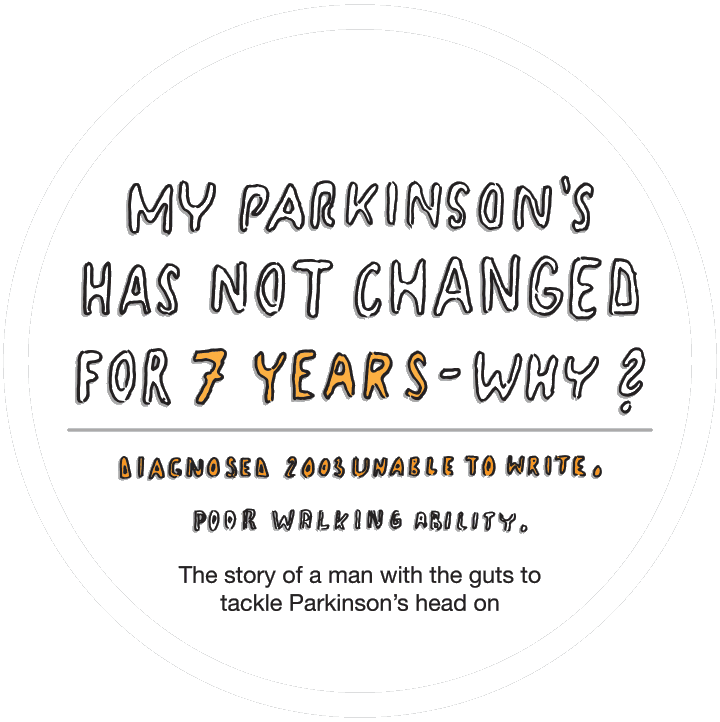


(the rigid form), diagnosed in 2003. Now 13 years
later I’ve been able to handwrite and draw most of the content on this
poster/website, which is a feat in itself.
I’m always up for a challenge and have always got a kick out of problem
solving, so I’ve proactively guinea-pigged myself for the last 7 years
in research programs with the best medical minds in Australia - all in
the search for a better lifestyle for myself and others on this
Parkinson’s journey - you and your loved ones included!
I’ve been on the leading edge for every industry I’ve been involved with
- scientific, architectural, biomedical, educational, correctional,
managerial & more - solving problems, delivering solutions and forging
better futures whether for the government or private industry - and even
now in retirement.
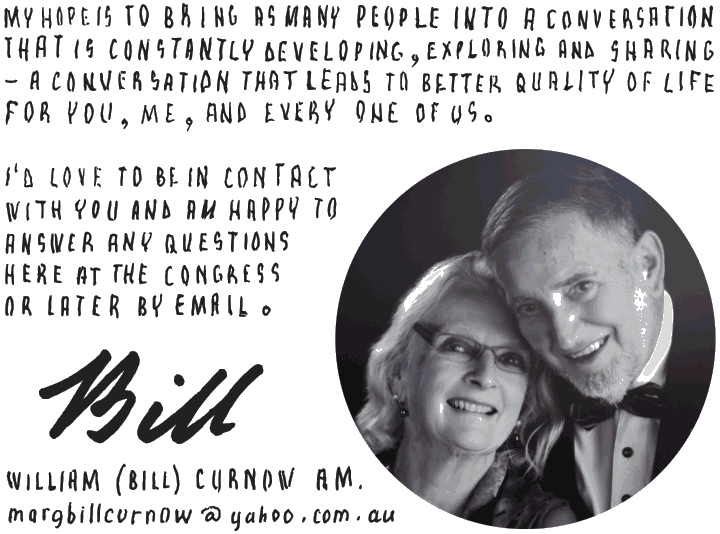

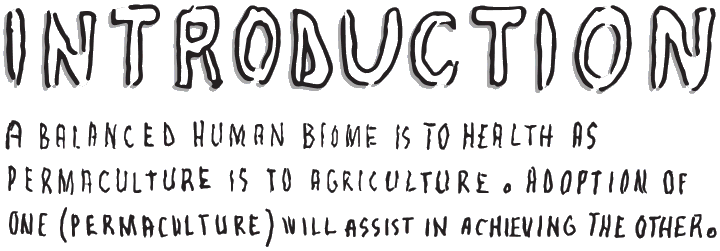

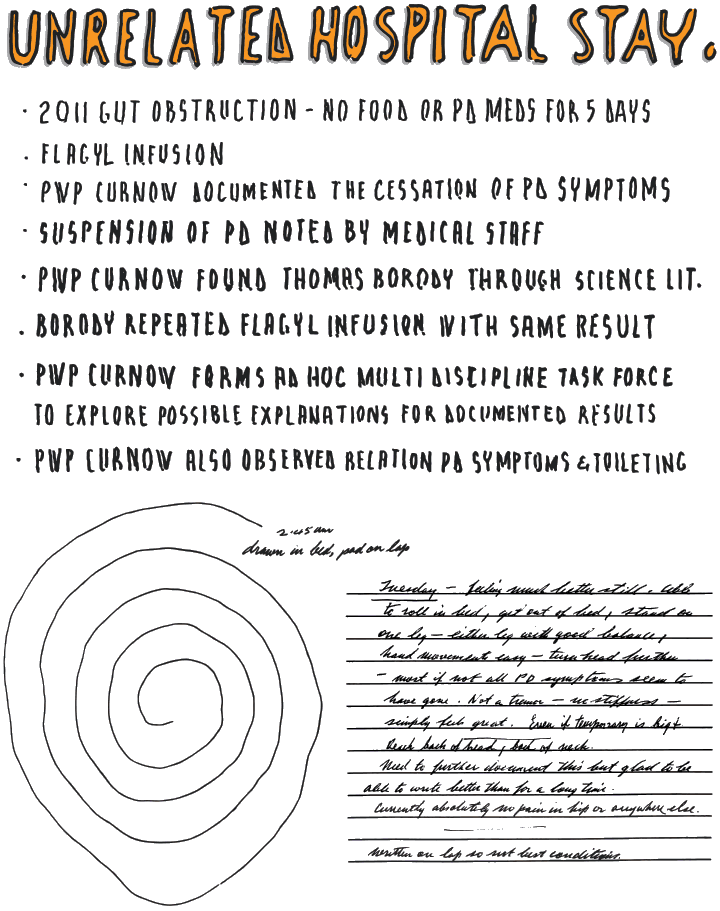

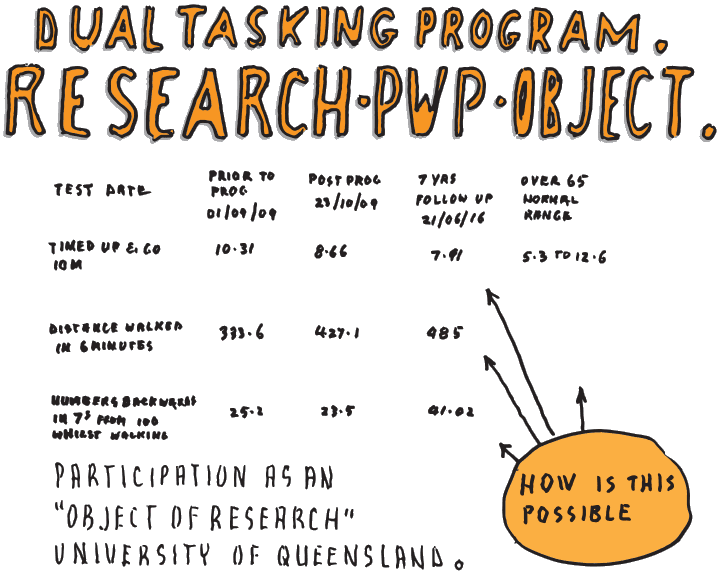

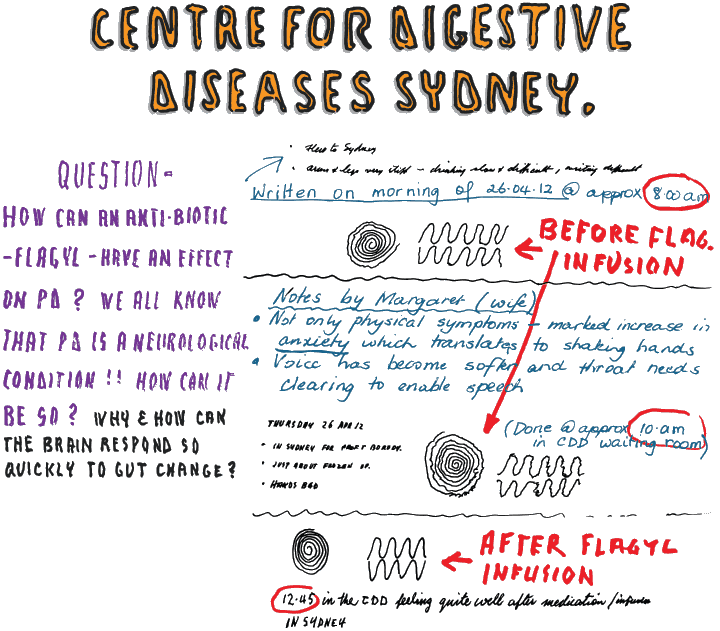

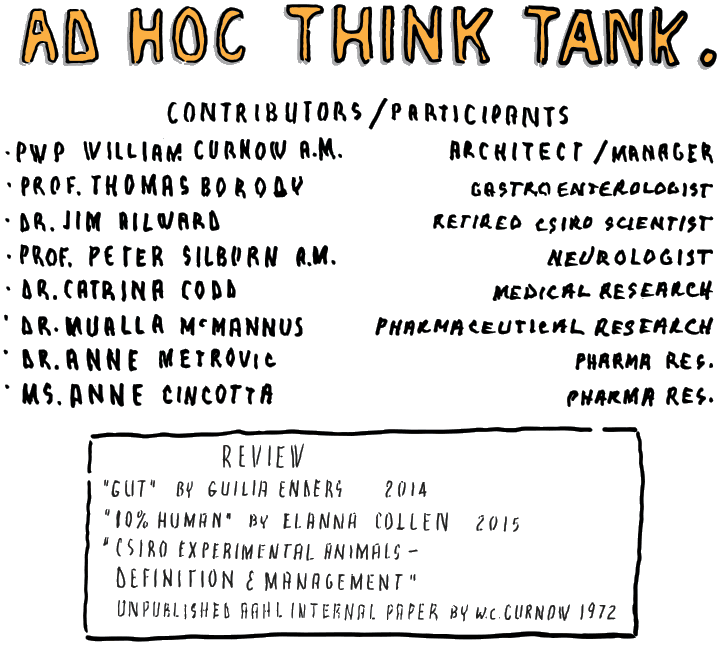

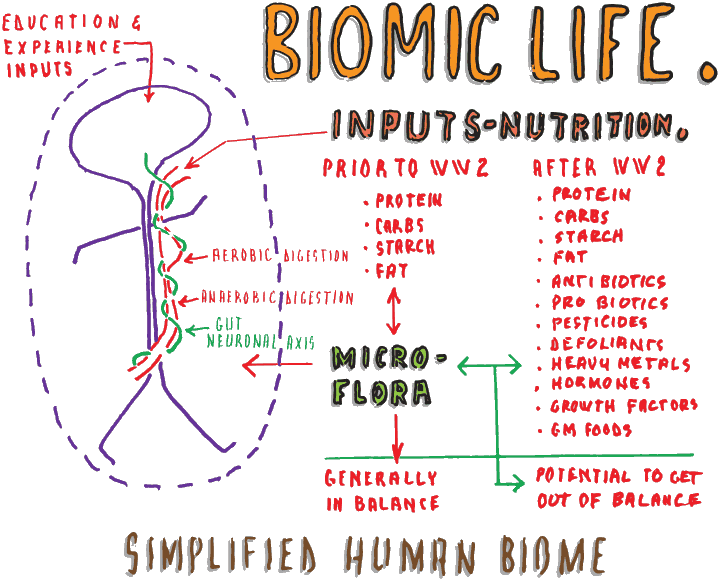

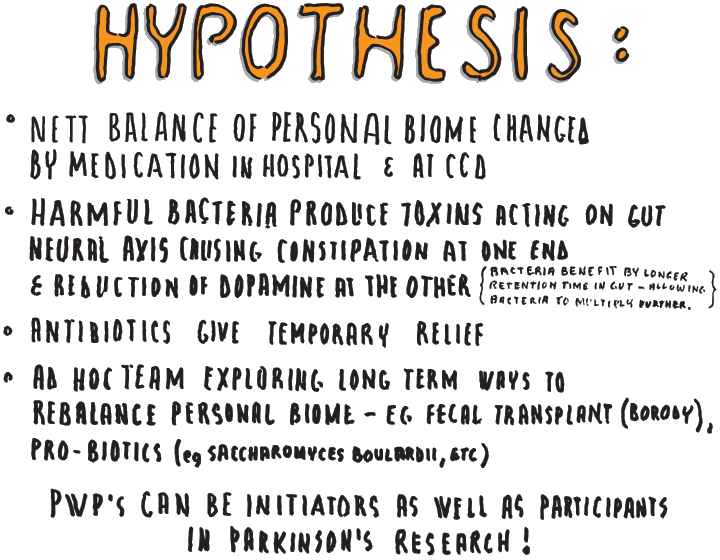

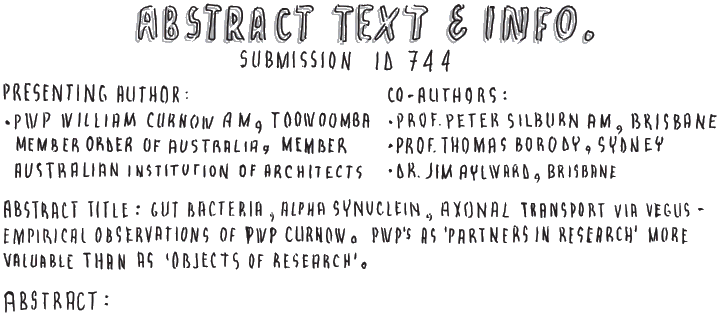
My busy career was threatened in 2003 with the
diagnosis of “Parkinson’s”. By 2007 I was no longer active, or
travelling unaided nationally/internationally. Rather than accepting
that I had an incurable condition I decided to read scientific papers
and ultimately asked my Neurologist if PD could be caused by bacterial
toxins.
Methods/Clinical Incident: In 2011 I was hospitalised for bowel
obstruction and after antibiotic infusions I noted surprisingly that my
PD symptoms virtually disappeared. My notes/drawings before and after
treatment graphically illustrated the difference. Silburn (my
Neurologist) was surprised when I explained - “Cessation of PD symptoms
was like turning off a switch”.
Outcome: After discharge PD absence lasted only 2 weeks. If antibiotics
suppressed gut bacteria I postulated their toxins caused PD in the brain
and connecting nerves must also be implicated. Via literature I located
Borody (Gastroenterologist) who administered IV metronidazole +
ceftriaxone and PD again disappeared. Effect tapered somewhat after two
weeks. This was followed by oral metronidazole and cefaclor which
maintained improvement over months but at a reduced efficacy. In 2014 I
noted improved motor function immediately after defecation, perhaps due
to reduced gut bacterial load and toxins interacting indirectly with gut
neuronal axis according to Aylward [CSIRO scientist]. Measured physical
performance before and after treatment confirm empirical observations.
Potential Way Forward: Borody previously noted faecal microbiota
transplant (FMT) for constipation led to similar results for 2 PWPs,
supporting this hypothesis. Arrival of oral capsules for FMT & PWPs’
observations opens scientifically credible research pathway to better
understand the link between gut bacteria, antibiotics, alpha-synuclein,
gut-neuronal axis and PD.
|
|
|
|